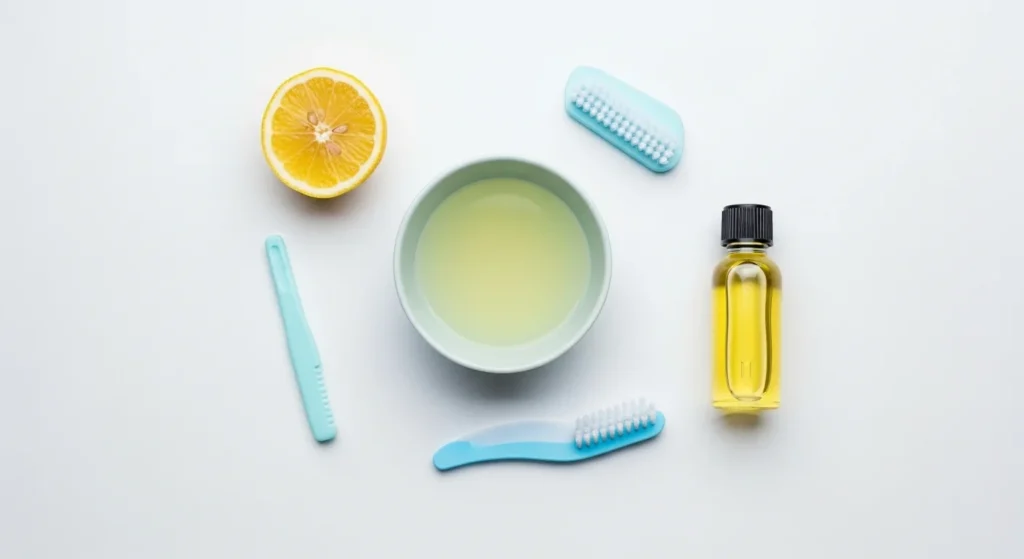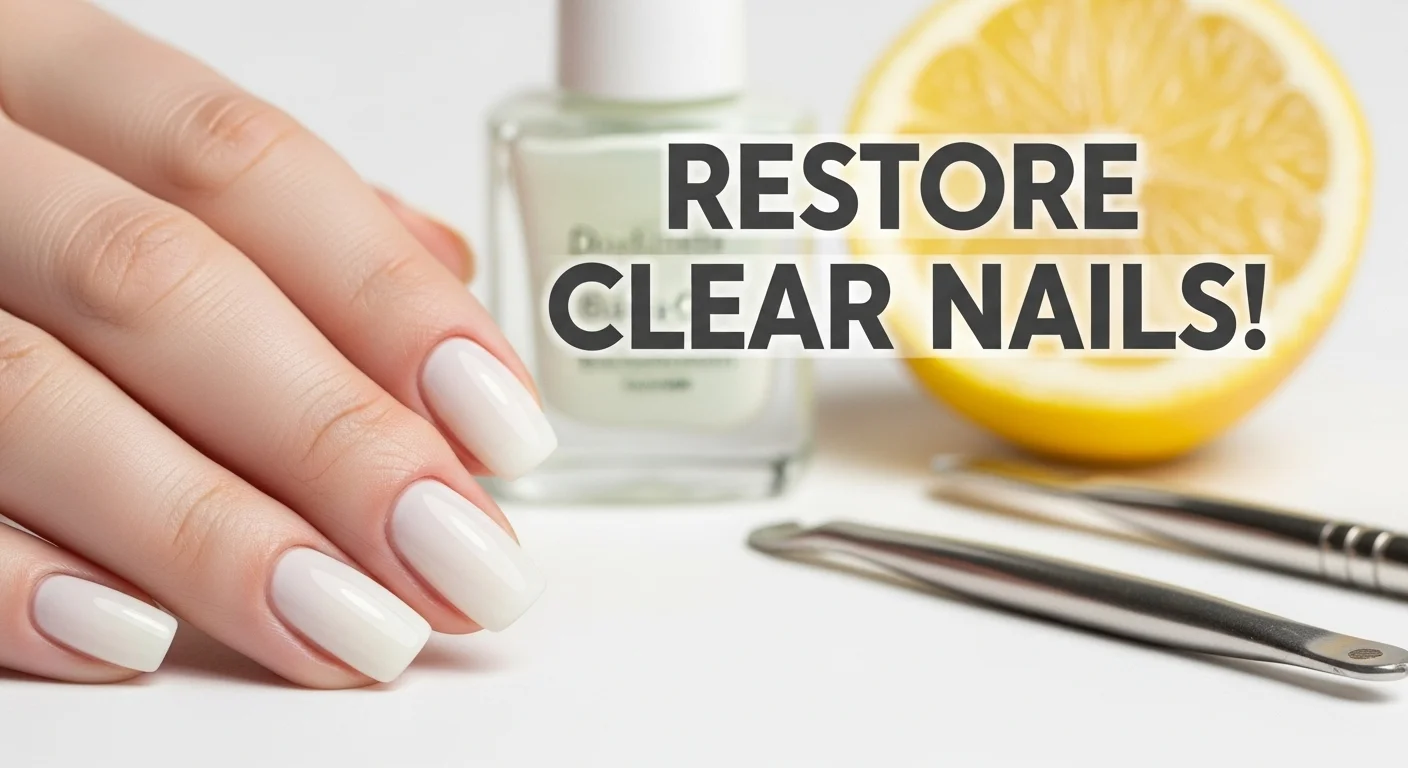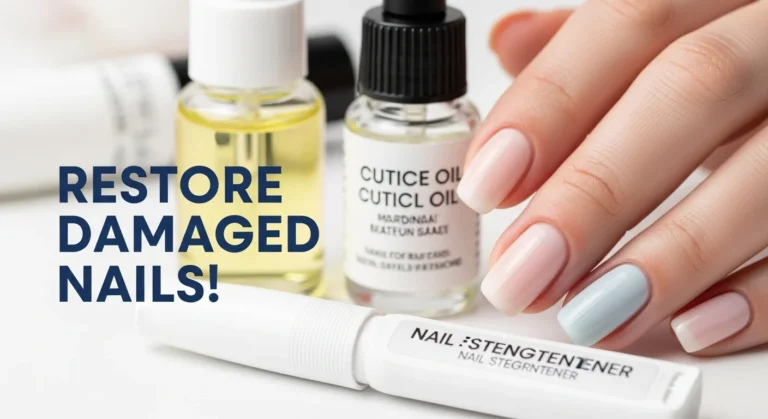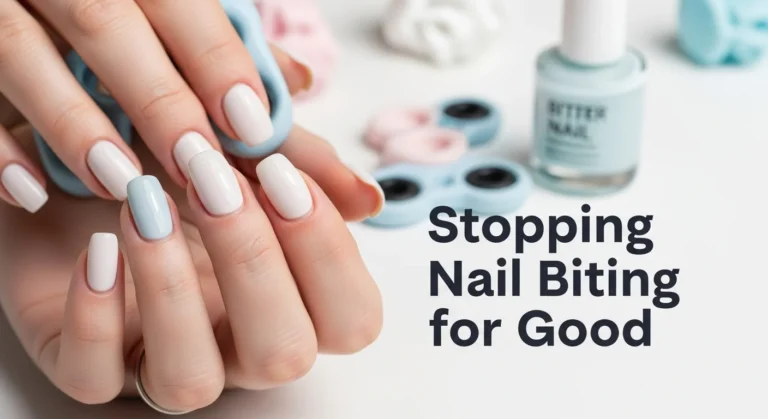Dealing with Yellow or Discolored Nails: A Practical Guide
Yellow or discolored nails, often caused by nail polish, smoking, fungal infections, or health issues, can be treated with home remedies, proper nail care, and medical consultation when needed. This guide provides step-by-step solutions like whitening treatments, preventive habits, and identifying serious causes, with practical tips and FAQs to restore healthy nails.
What Are Yellow or Discolored Nails and Why Do They Happen?
Yellow or discolored nails occur when the nail plate takes on a yellowish, brownish, or uneven hue, often noticeable on fingernails or toenails. This condition is common, affecting approximately 10-20% of adults, with higher prevalence in older populations (Journal of Dermatology, 2020). While often cosmetic, discoloration can signal underlying issues.
Common Causes of Yellow or Discolored Nails
Fungal Infections
Nail Polish Staining
Smoking
Medical Conditions
Aging
Note: Bar heights are illustrative, based on common causes (Journal of Dermatology, 2020).
Common Causes
- Nail Polish Staining: Dark polishes, especially reds and purples, can leave yellow stains without a base coat.
- Fungal Infections: Fungi like dermatophytes cause up to 50% of nail discoloration cases (American Academy of Dermatology, 2021).
- Smoking: Nicotine and tar from cigarettes stain nails over time.
- Medical Conditions: Psoriasis, liver disease, or diabetes can cause discoloration.
- Aging: Natural changes in nail thickness or keratin production may lead to yellowing.
How Do Discolored Nails Affect You?
Discolored nails can have both physical and emotional impacts:
- Cosmetic Concerns: Yellow nails may cause self-consciousness or embarrassment.
- Infections: Fungal or bacterial infections can worsen if untreated, leading to nail thickening or loss.
- Health Indicators: Persistent discoloration may signal systemic health issues requiring medical attention.
- Nail Weakness: Discoloration from infections or chemicals can weaken nail structure.
How Can You Treat and Prevent Yellow or Discolored Nails? A Step-by-Step Guide
Restoring nail color and preventing recurrence involves targeted treatments and consistent care. Follow these steps for effective management.

Step 1: Identify the Cause
Why it matters: Pinpointing the reason for discoloration guides effective treatment.
How to do it:
- Check recent nail polish use, especially without a base coat.
- Note symptoms like thickening, brittleness, or odor, which suggest fungal infections.
- Review lifestyle factors like smoking or chemical exposure.
- Monitor for other symptoms (e.g., fatigue, skin changes) that may indicate medical issues.
Step 2: Use Home Whitening Remedies
Why it matters: Gentle remedies can reduce superficial staining safely.
Methods:
- Lemon Juice Soak: Soak nails in a mix of 1 tbsp lemon juice and 1 cup water for 5-10 minutes daily; rinse thoroughly.
- Baking Soda Scrub: Mix 1 tsp baking soda with water to form a paste, gently scrub nails with a soft toothbrush, 2-3 times weekly.
- Hydrogen Peroxide (3%): Dilute with equal parts water, soak for 5 minutes weekly, then moisturize to prevent drying.
- Caution: Avoid overuse of acidic or abrasive remedies to prevent nail weakening.
Step 3: Address Fungal Infections
Why it matters: Fungal infections require specific treatments to clear discoloration and prevent spread.
Actions:
- Apply over-the-counter antifungal creams (e.g., containing clotrimazole) to affected nails daily for 4-8 weeks.
- Keep nails dry and clean, as fungi thrive in moist environments.
- Consult a dermatologist for persistent cases; oral antifungals may be prescribed.
Step 4: Adopt Preventive Nail Care Habits
Why it matters: Proper care prevents staining and supports nail health.
Tips:
- Always apply a clear base coat before colored nail polish to block pigments.
- Trim nails regularly and file gently to maintain smooth edges.
- Moisturize cuticles and nails daily with oils like jojoba or vitamin E to prevent dryness.
- Wear gloves when using cleaning products or dyes to avoid chemical exposure.
Step 5: Monitor and Seek Medical Advice
Why it matters: Persistent or worsening discoloration may indicate serious conditions.
Steps:
- Track changes in nail color, texture, or associated symptoms for 2-4 weeks.
- Consult a dermatologist or doctor if discoloration spreads, nails thicken, or other health symptoms appear.
- Blood tests or nail biopsies may be needed to rule out conditions like psoriasis or liver issues.
Tools and Products to Help
The following table lists tools and products for managing yellow or discolored nails, with their purpose and usage.
| Tool/Product | Purpose | How to Use | Availability |
|---|---|---|---|
| Clear Base Coat | Prevents polish staining | Apply before colored polish, reapply every 3-5 days | Drugstores, beauty stores |
| Antifungal Cream | Treats fungal infections | Apply to affected nails daily for 4-8 weeks | Pharmacies, online |
| Lemon Juice | Naturally whitens nails | Dilute with water, soak 5-10 min daily | Supermarkets |
| Soft Nail Brush | Gently cleans and scrubs nails | Use with baking soda paste, 2-3 times weekly | Beauty stores, online |
| Cuticle Oil | Hydrates nails and cuticles | Apply daily, massage in | Drugstores, online |
Additional Tips for Success
- Be Patient: Nail growth is slow; full results take months as healthy nails grow out.
- Test Remedies: Patch-test whitening solutions on one nail to ensure no irritation.
- Quit Smoking: If smoking is a cause, reducing or quitting can prevent further staining.
- Check Polishes: Use high-quality, non-toxic polishes to minimize staining risks.
When to Seek Professional Help
Consult a dermatologist if discoloration doesn’t improve after 4 weeks, spreads to multiple nails, or is accompanied by pain, swelling, or systemic symptoms. A doctor can diagnose underlying conditions and prescribe treatments like oral antifungals or medicated polishes.
To maintain overall nail health and prevent issues like dryness that can worsen discoloration, read our guide on Taming Dry, Cracked Cuticles.
FAQS
Frequently Asked Questions
How Long Does It Take to Fix Yellow Nails?
Superficial stains may fade in 1-2 weeks with consistent home remedies. Fungal infections take 4-12 weeks to treat, and new nail growth (3-6 months for fingernails) fully restores color.
Can Yellow Nails Indicate Serious Health Problems?
Yes, persistent yellowing may signal psoriasis, diabetes, or liver disease. If home treatments don’t work after 4 weeks or other symptoms appear, consult a doctor.
Are Home Remedies Safe for All Nails?
Most remedies like lemon juice or baking soda are safe but can dry nails if overused. Limit acidic treatments to once daily and moisturize afterward. Avoid if nails are cracked or infected.
When Should I See a Doctor for Discolored Nails?
See a dermatologist if:
- Discoloration persists beyond 4 weeks despite treatment.
- Nails thicken, crumble, or emit an odor.
- You notice systemic symptoms like fatigue or jaundice.






